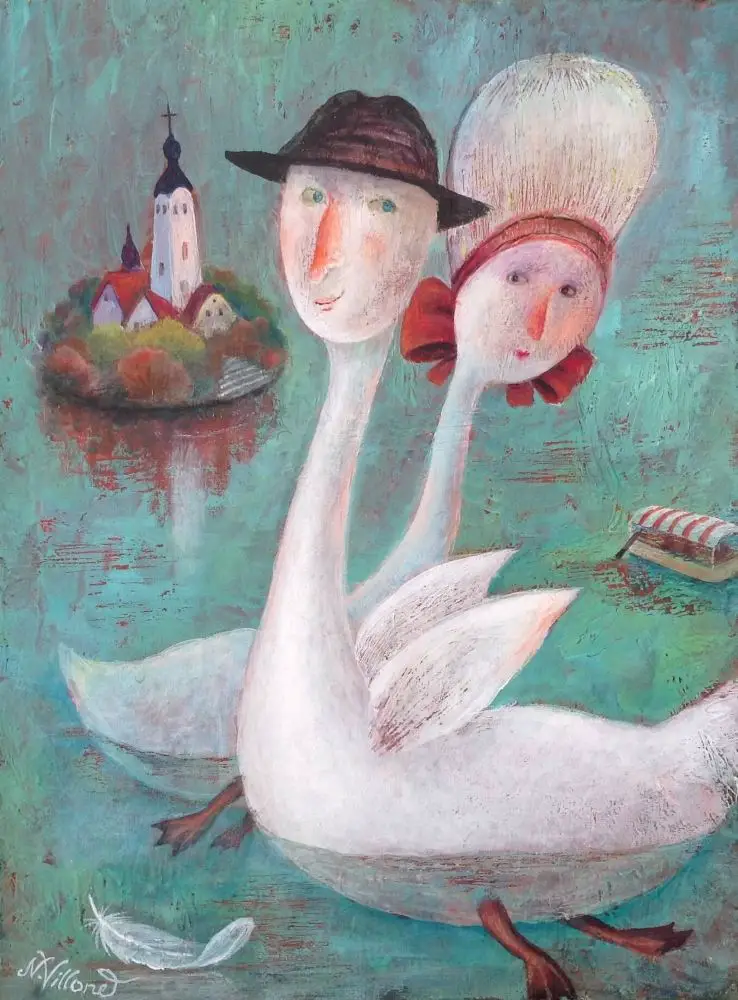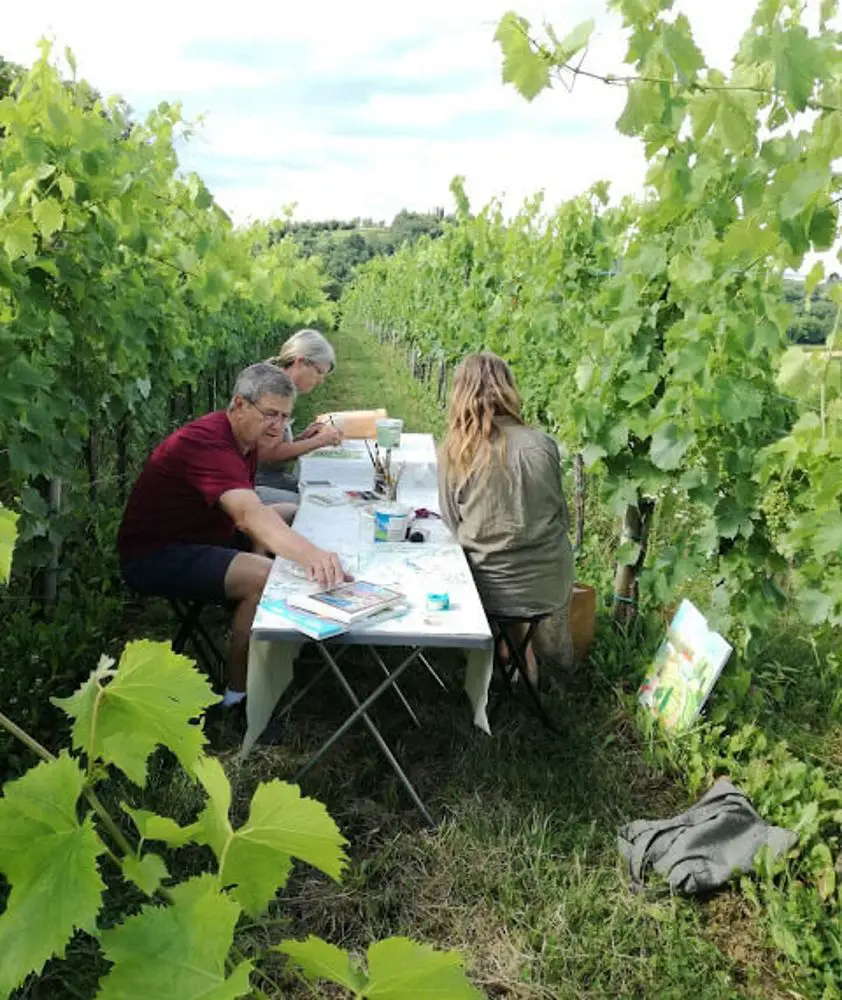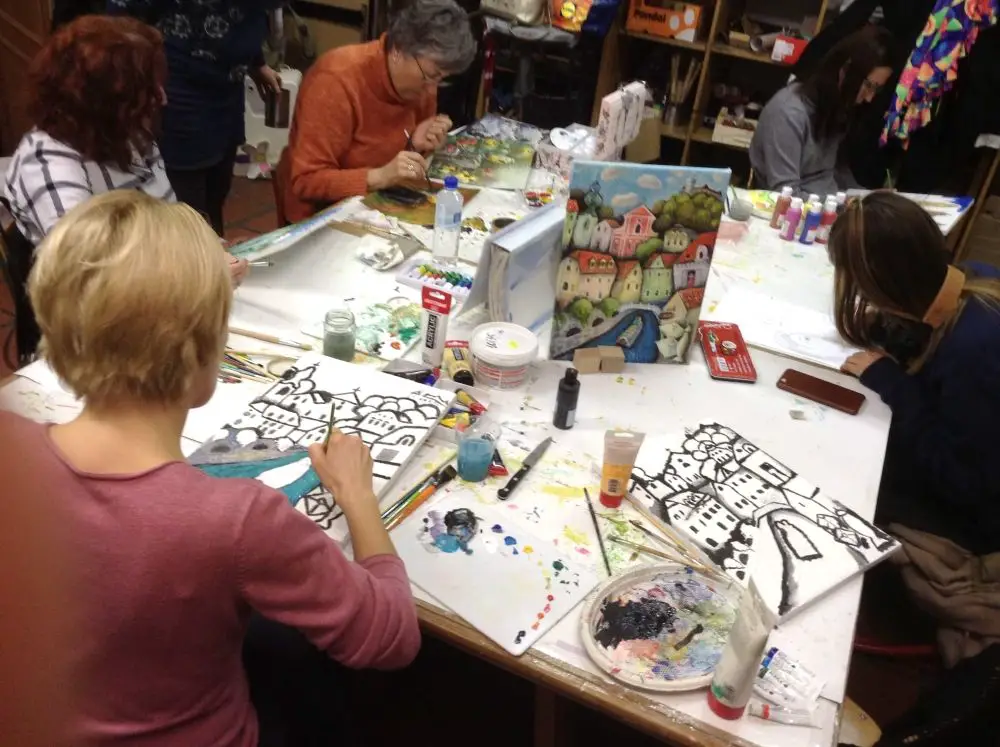Ljubljana related
STA, 23 July 2019 - This year's traditional memorial ceremony at the Russian Chapel (Ruska kapela) under the Vršič Pass, which honours Russian POWs killed during WWI, will be focused on the post-war period. It is expected to be attended by several thousand people, including high-profile guests from Russia, the organisers have announced.
Taking place on Saturday, the ceremony marking the 103rd anniversary of the construction of the Russian Orthodox chapel will see the keynote address by parliamentary Speaker Dejan Židan as the honorary sponsor of the event.
Addressing the ceremony in front of the chapel built by Russian POWs engaged in forced labour in the area during WWI will also be Ljubljana University Chancellor Igor Papič, as this year's event is connected with the 100th anniversary of the university.
It was Russian immigrants who helped establish the university one hundred years ago, the organisers noted at a press conference in Ljubljana on Tuesday.
The ceremony will be attended by official delegations of the Russian government and the Russian Orthodox Church, the former headed by Minister of Digital Development, Communications and Mass Media Konstantin Noskov.
The memorial mass will meanwhile be celebrated by Bishop Siluan, the rector of the Saint Petersburg Theological Academy.
The organisers announced that the road between Kranjska Gora and the chapel under the highest pass in Slovenia will be closed, with free bus rides organised for visitors.
After the ceremony, which will start at 10am, a traditional meeting of members of the Slovenia-Russia Association will be held in Kranjska Gora, and several other events will be held, including in Ljubljana.
On Friday, a concert of the Russian jazz band Vadim Eilenkrig Quartet will be held in Ljubljana's Congress Square, while the mixed choir of the Saint Petersburg Theological Academy will perform in the Franciscan Church of the Annunciation on Sunday.
Urban Ocvirk of the Slovenia-Russia Association said that they wanted to give this year's ceremony a positive note and focus on the post-war period.
"The emphasis is on putting all the accumulated hatred, suffering and conflicts aside and transforming it into remembrance, reverence, into a possibility of creating something new in the dialogue between cultures, nations, people."
According to Ocvirk, the post-war period was ground-breaking time for people who needed to again find humaneness in themselves, which is why the ceremony should not only mark the tragedy of Russian soldiers.
"In more than 100 years, the chapel has developed into a legend, being transformed from a symbol of war and victims of injustices into a symbol of peace and the friendly relations between the Russian and Slovenian nations," added the association's president Ivan Geržina.
Russian Ambassador Doku Zavgayev said at the conference that the Slovenian-Russian relations had been progressing in various fields.
Zavgayev noted that Russia had recently donated to Slovenia a monument honouring Slovenian translator Davorin Hostnik, who compiled the first Russian-Slovenian dictionary. It was unveiled in his native Šmarje pri Jelšah at the end of May.
STA, 14 June 2019 - The Slovenia-Russia commission for trade and scientific cooperation detected opportunities to expand cooperation at a session in Bled on Friday, in particular in IT, transport, research and agriculture.
Addressing reporters at the conclusion of the session, Foreign Minister Miro Cerar and Russian Minister of Digital Development, Communications and Mass Media Konstantin Noskov said that the commission was producing concrete results and projects.
"The commission is very important in identifying new business opportunities. Through it, we're doing what is necessary to enhance cooperation between businesses in the two countries," Cerar said.
He said that Russia remained a major trading partner for Slovenia, ranking 4th in terms of Slovenian foreign direct investment abroad and 9th in terms of exports.
The volume of bilateral merchandise trade has been increasing since 2017, amounting to EUR 1.16 billion last year, which Cerar said was encouraging.
He expects trade will increase further, but he said "it will be a special challenge to achieve a right balance", after Slovenia posted a trade deficit in the first quarter of this year for the first time.
The reason for the drop in Slovenia's exports recently was that Slovenian companies were locating their production in Russia.
Talks with the Slovenian companies doing or planning to do business in Russia "showed realistic opportunities to increase the volume of business", said Cerar.
The potential was identified in the fields of information technologies, transport, scientific research, agriculture and enhanced cooperation with Russian regions.
Reviewing the implementation of major projects, the commission established successful realisation of six IT projects, and added five new projects in the fields of health research, energy efficiency, ICT, agriculture and education to the programme.
Cerar underscored the need to continue constructive dialogue between the EU and Russia to reduce negative effects of restrictive measures on economic cooperation.
"Russia is a European neighbour and an important trading partner. It's key to foster a relationship of trust through regular dialogue and cooperation", said Cerar, adding that Slovenia and Russia had that trust.
"We see current cooperation between the two countries quite positively", Noskov said, describing Slovenia as a reliable and constructive partner, and noting good prospects to boost cooperation.
Noskov had expected the session to mainly seek to solve companies' problems, but it turned out the cooperation was good and that there were new concrete proposals to enhance it.
Russian companies are aspiring to do business with Slovenian businesses as well, he said, noting the Russian railways and the bank Sberbank were especially active in this respect.
All our stories on Slovenia and Russia can be found here
STA, 29 May 2019 - Foreign ministers of Slovenia and Russia, Miro Cerar and Sergey Lavrov, confirmed that political ties between the two countries were good, as they addressed the media following a meeting in Ljubljana Wednesday morning. The pair discussed topical issues, above all the Western Balkans.
Cerar told the press that Slovenia deemed it important to nurture regular dialogue at the top level with permanent members of the UN Security Council and key players in international relations.
Slovenian FM @MiroCerar is meeting Russian FM Lavrov at @MZZRS: an active dialogue at the highest level is all the more important among the countries that, for overcoming modern global challenges, are committed to #multilateralism. ????#Slovenia #Russia #Lavrov pic.twitter.com/TU9IB6Wy6J
— SLOVENIAN MFA (@MZZRS) May 29, 2019
"Being a member of the EU and NATO, Slovenia is striving for stability in the international community, especially in our neighbourhood, the Western Balkans. Therefore, we support open dialogue with Russia on all topical issues of international significance," said Cerar.
Cerar underlined the importance of the role played by the EU in Western Balkans, while Lavrov said that all open issues in the region must be resolved in a peaceful manner and through political dialogue.
They also commented on tensions in Kosovo triggered earlier this week. Lavrov said that the the tensions were provoked by those who want to make the Balkans a "sanitary cordon" targetting Russia, adding that this is being allowed by the EU and NATO.
Cerar expressed belief that the events will undoubtedly have broader consequences for the relations between Prishtina and Belgrade.
The foreign ministers also talked about other international challenges such as terrorism, the crises in Syria and Libya, the growing tensions between the US and Iran, and relations with China.
Cerar also underlined the need to do everything possible to resolve the Yemen conflict and bring one of the worst humanitarian disasters to an end.
Commenting on the Ibiza scandal that recently broke in Austria, Lavrov said that this was a case of Russo-phobia, adding that the noise had died down since it became clear that the alleged Russian oligarch daughter was not who she pretended to be.
The ministers announced that Prime Minister Marjan Šarec would visit Russia, accompanied with a business delegation, in mid-September.
Lavrov and Cerar confirmed good bilateral cooperation in business, culture and science, with Cerar saying that Russia was a key economic partner to Slovenia.
Merchandise trade between the countries amounted to EUR 1.16 billion last year, according to Slovenia's statistics, while those provided by Russia are even higher.
Russia is the fourth most important partner in terms of Slovenia's foreign direct investments, while Slovenia is becoming an increasingly popular destination among Russian tourists.
Cerar added that a bilateral commission for economic cooperation plays an important role in this and that the body would meet in Slovenia on 13 and 14 June.
Moreover, a Slovenian business delegation led by Economic Development and Technology Minister Zdravko Počivalšek is expected at the St. Petersburg International Economic Forum in early June.
This was the foreign ministers' second meeting following Lavrov's arrival on Tuesday. Last night, they met behind closed doors at Strmol Castle, some 20 kilometres north of Ljubljana.
Today, Lavrov also held separate meetings with President Borut Pahor and Prime Minister Marjan Šarec. Pahor said in a tweet that they discussed preparations for the Three Seas Initiative meeting, which Pahor will be hosting next week.
Predsednik Republike Slovenije Borut Pahor je sprejel ministra za zunanje zadeve Ruske federacije Sergeja Lavrova, ki se mudi na obisku v Sloveniji. pic.twitter.com/GBAAGvd2P2
— Borut Pahor (@BorutPahor) May 29, 2019
The pair also discussed topical multilateral issues, focusing especially on the Ukraine crisis and the situation in the Western Balkans.
The Ukraine crisis was also discussed in the meeting between Lavrov and Šarec, with the prime minister's office saying that Slovenia supported a peaceful solution in eastern Ukraine and underlined the importance Minks Agreement implementation.
They also discussed bilateral relations, labelling them friendly and adding that the countries are in ongoing dialogue in a number of fields, including economy, culture, science and education.
Zahvaljujoč posameznikom, kot je Davorin #Hostnik, avtor prvega slovensko-ruskega slovarja, so se skozi zgodovino odnosi med ruskim in slovenskim narodom razvijali v duhu prijateljstva in razumevanja. Razumeli smo se tudi takrat, kadar se nismo strinjali. ???? pic.twitter.com/IT9GyCy0WJ
— dr. Miro Cerar (@MiroCerar) May 29, 2019
The foreign ministers were today also scheduled to unveil a monument honouring Davorin Hostnik (1853-1929), the author of the first Russian-Slovenian dictionary, who made a significant contribution to bilateral relations in culture and science at the turn of the century.
STA, 28 May 2019 - Russian Foreign Minister Sergey Lavrov will arrive in Slovenia on Tuesday evening, starting a two-day visit by meeting his counterpart Miro Cerar at Strmol Castle near Cerklje na Gorenjskem. On Wednesday, he is scheduled to meet President Borut Pahor and Prime Minister Marjan Šarec.
Today's meeting will take place behind closed doors and the pair will hold another one tomorrow morning at the Foreign Ministry in Ljubljana. The latter is to be followed by a press conference.
The Slovenian Foreign Ministry has said beforehand that the visit represents the continuation of bilateral dialogue between the two countries. Lavrov's last trip to Slovenia was in February 2018.
After meeting Pahor and Šarec on Wednesday, Lavrov will attend a ceremony in Šmartno pri Litiji to unveil a statue honouring Davorin Hostnik (1853-1929), the author of the first Russian-Slovenian dictionary.
Russia is a key trade partner for Slovenia, with trade amounting to EUR 1.16 billion last year. The figure was highest in 2014, when it reached nearly EUR 1.5 billion.
Trade has decreased in recent years due to a poorer macroeconomic situation on the Russian market and sanctions the EU imposed on Russia after the latter annexed Crimea. Both Slovenia and Russia hold the view that the 2015 Minsk Agreement is key in ending the tensions in Ukraine.
Tensions between western countries and Russia ran high again in March 2018 following the poisoning of former Russian double agent Sergey Skripal. While the UK blamed Russia for his death, Moscow denied the allegations.
Following the Skripal attack, Slovenia was one of the few EU member states which did not expel Russian diplomats.
The countries also have close cultural ties. Only last week, a collection of more than 80 icons from leading Russian museums went on display at the Ljubljana City Museum.
But the key event each year is the commemoration of more than 100 Russian POWs who died in an avalanche building the Vršič mountain pass during World War I.
STA, 24 April 2019 - The Chamber of Commerce and Industry (GZS) hosted a meeting of businessmen from Slovenia and the Russian Samara region on Wednesday as part of a visit by a delegation led by Samara Governor Dmitry Azarov. On the occasion the GZS signed a cooperation agreement with its Samara counterpart.
A press release from the GZS quoted the chamber's executive director Sonja Šmuc in saying that the agreement would boost trade and business links between Slovenia and the Samara region.
Šmuc believes that Slovenia and Russia could match the record volume of trade seen in 2013, at EUR 1.5bn, in a year and a half.
Last year, bilateral trade amounted to EUR 1.15bn, around 45% of which was generated by the pharmaceutical industry, followed by telecommunications, engineering, household appliances and paints.
"We also want to set up cooperation in other areas, such as the agricultural and food industry, IT, cooling technology," Šmuc told the meeting, featuring more than 50 businessmen.
Governor Azarov noted huge potential for cooperation in particular in science and education, industry and tourism. He believes the agreement signed today would give a new impetus to business links.
According to him, the Samara region has a well diversified industry, excellent higher education and science, a suitable geographical position, and has taken fiscal and legislative solutions designed to attract capital and know-how.
The meeting was also attended by Russian Ambassador Doku Zavgayev, who said he believed in expanding ties between Slovenia and several Russian regions, with great potential in modern technology.
Victor Kudryashov, the first deputy of the chairman of the government of the Samara region, said that the region was open to new development partnerships and investment.
He said that the Samara Oblast as Russia's centre of the automotive and space industries welcomed Slovenian know-how, which could be implemented in the industry there.
All our stories about Slovenia and Russia are here
STA, 17 April 2019 - A visiting exhibition on shamanism in Siberia, put on by the Russian Museum of Anthropology and Ethnography in Saint Petersburg, is opening at the Ethnographic Museum in Ljubljana on Wednesday. The exhibition presents the culture and shamanism of 18 indigenous peoples of Siberia and the Russian Far East.
The exhibition casts light on the basic element of shamanism, which is characterised by a special concept of the world whose structure is made up of three parts - the Upper World (the sky, where the gods live), the Middle World (Earth, where people live) and the Under World (the world of the dead).
The three worlds are interlinked by a central axis (axis mundi), whose symbol is the tree of the world, which shamans use to make their drums, the author of the exhibition Valentina V. Gorbacheva of the Russian museum said.
According to the director of the Slovenian Ethnographic Museum, Tanja Roženbergar, the exhibition presents "the extraordinary yet little known phenomenon of shamanism that speaks of unity between man and nature and the entire universe".
Gorbacheva said that 18 out of the 45 indigenous peoples living in Siberia and the Russian Far East were presented. They all share a very close connection with nature and respect for natural spirits.
The shaman is considered an intermediary between humans, nature and the spirit world. He or she was the guardian of rare knowledge and traditions, chosen by spirits. In a ritual known as kamlanie, the shamen achieved a state of ecstasy and connected with the world of the spirits.
The exhibition features 80 rare ethnographic objects such as a ritual cloak made out of fish skin, ritual masks and small sculptures, and 45 archive photographs from the Russian Ethnographic Museum, which portray the spiritual culture of the Siberian peoples from the late 19th and the first half of the 20th centuries.
The final part of the exhibition reveals the connections between shamanism and Christianity and Buddhism.
The exhibition, which will be open until 20 October, will be accompanied by various discussions, film screenings, musical events, workshops and a programme for children and families.
All our stories on the Ethnographic Museum are here, while our regular guides to What’s on in Ljubljana are here
STA, 30 March 2019 - Damir Črnčec, the state secretary in the prime minister's office for national security, has told the Siol web portal that all types of radicalisms or extremisms are present in Slovenia, but noted that Slovenia is a safe country.
Črnčec, whose appointment as Marjan Šarec's aide has raised some controversy, said that "all three types of radicalisms and extremisms are present in Slovenia - the right and left, as well as Islamic fundamentalism."
While noting that Slovenia was a safe country, he said that the biggest potential threats were those of the information and cyber type and the issue of illegal migrations, terrorism and a rise of extremism and violent extremism.
Črnčec finds that terrorism is very well defined in the Slovenian legislation, "while there are legal voids when it comes to extremism and violent extremism."
He said that Slovenia lagged behind other countries in terms of information and cyber security, but added that the government had earmarked additional funds for this field in 2019.
"We count on an administration for information security to be established within the Public Administration Ministry, which would deal with the preventive aspect of the forming of a serious information security backbone in Slovenia."
According to Črnčec, the EU is under the "threat represented by so-called fake news and disinformation". "We are talking primarily about the influence of external players, countries, on the political process in the EU."
"The same is true for the influence of these players on individual countries," he said. Asked whether Russia represented the biggest threat in this respect, he said he could hardly say something like that when it came to Slovenia.
Črnčec insists that illegal migrations were primarily a security issue and that it was a criminal act, with the structure of illegal migrants representing the biggest risk.
He assured the public that the migration issue is being managed. "Maintaining a balance between security and solidarity is and will remain the key imperative of our actions in the future."
Commenting on the attempts of the local authorities in Ilirska Bistrica (SW) to prevent a migrant centre from being established there, Črnčec said that the government's position was that a local referendum on the issue was inappropriate.
There is no legal basis for it either, he said, adding that "the government will simply not allow that."
Regarding hate speech, of which he personally had been accused of in the past, Črnčec said that hate speech was present in Slovenia and that a challenge for the future remained to find a balance between its regulation and freedom of speech.
All our stories on Slovenian politics are here
Moving to another country is often a difficult process, as you go through the stages of honeymoon, frustration, adjustment and acceptance, learning how to not just live but thrive in a new environment. Natasha Villone is someone who knows this well, having been born in Orel, Russia, and made new lives in the US and then Slovenia, where she’s now based in Koper and works as an artist – selling her works, teaching and leading art tours. We got in touch with her to learn more about her journey, and she was kind enough to send back some answers.
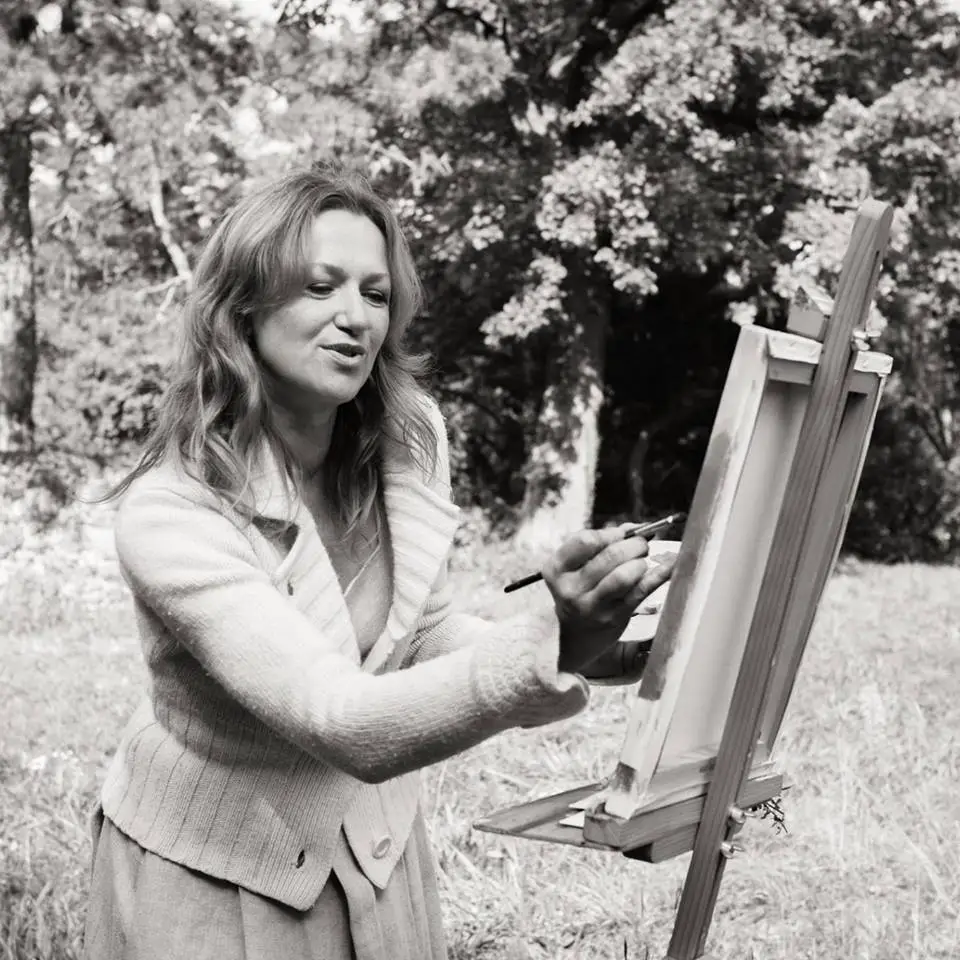
Natasha, painting
You work as a painter. When did you first get serious about art?
Since childhood the easiest and most natural thing for me to do was to paint. In spite of this, when I young, after high school, I wanted to run away from carrier as a painter. But my mom, a very wise woman, secretly signed me up for art collage, where I got diploma in theatre design.
Back then in Russia after me and my classmates graduated we were supposed to work by college referral in some type of village theatre or community club for a minimum of three years. I refused, and in order to stay in a city I took a job at the famous tray and samovar (Russian teapot) factory “Zostovo”. I painted traditional decorative trays with bouquets of roses. Later in my art life I’d use principals which I learned at the factory: volume, perspective, range of colours. But at the time the production line job and constant paint under my nails made me want to be somebody else.
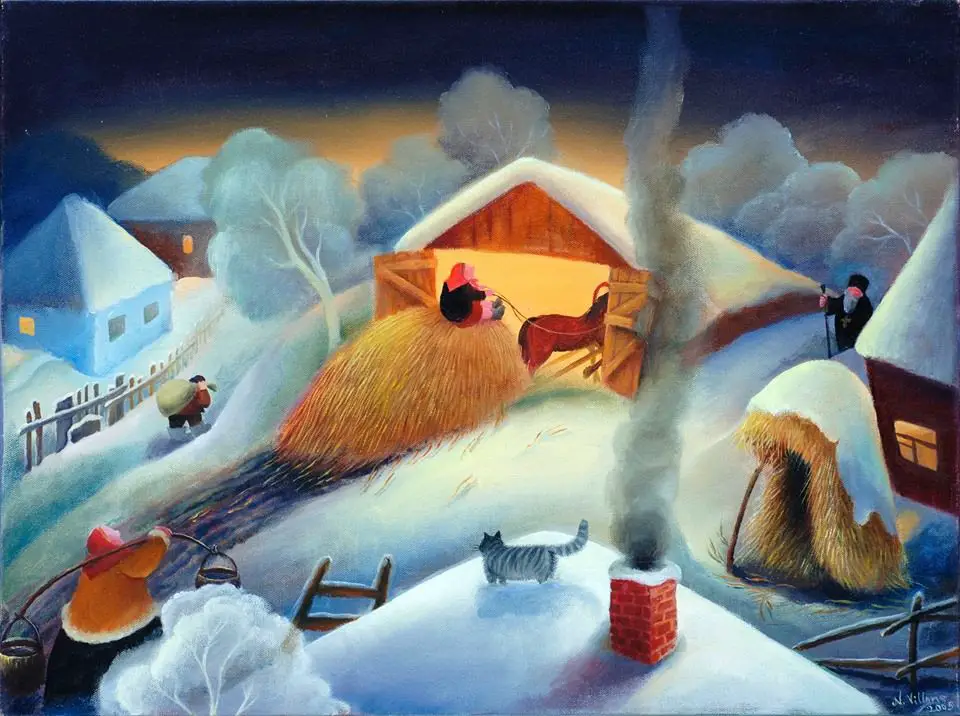
Then the Soviet Union broke apart. Russia was under President Yeltsin everything went upside down with jobs, morality, values. The factory was closed and I was left with no direction. Maybe it gave me push to look for new life abroad.
In 2001 I finally moved to America, Seattle, hoping the grass was greener there. Then in the same year September 11 happened, followed by an economic crisis. I had to do many hard jobs, and wasn’t sure that I could paint again, so I changed direction and tried something different, not just to become an artist.
But ability and desire to create were still inside me. Once at church I heard the pastor say that it’s sin to bury your talent. There’s that story in the Bible about a servant who buries the talents (money) that his master gave him to make a profit on. He was afraid to use the money and so returned it without any gain, but the master wasn’t happy at all. It was this message that pushed me to start painting again.
I’m thankful to my husband Andrew, too, about this. Many times he would walk into galleries, meet the owner, talk about me, and I would have a show there. It’s very important if your spouse supports you, promotes you, or lets you know if you’re not producing enough art, or too much art, and not marketing it well. In this business being a good artist is just 10%, the other 90% is your character not giving up, and knowing how to present yourself to the public.
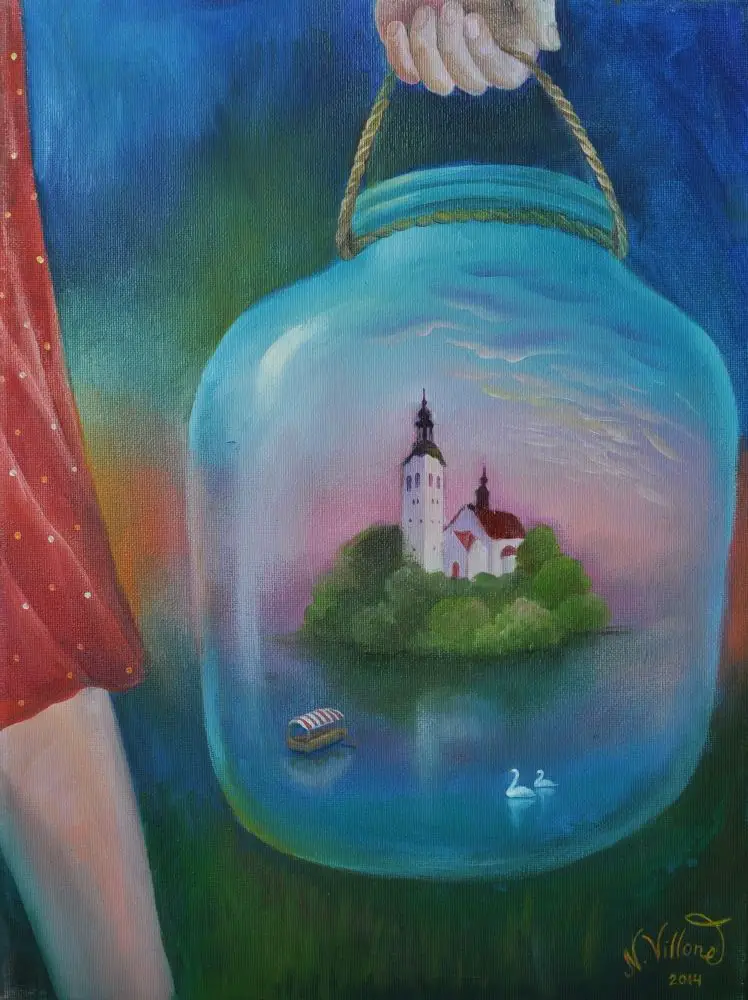
How did you end up in Slovenia?
While living in America, my husband started running a tourism business in Slovenia. Flying back and forth between the two countries was too hard. I remember one day he said: “Prepare yourself, you have one year, then we’ll move to Slovenia.”
By this time we had two little kids. I was working for good company. My mom from Russia was living nearby and helping with the kids. Art was my second freelance job sometimes in a evening. And now I have to quit my stable job, leave my mom, take kids and follow my husband. Women would not do it, only man could do such a crazy but maybe strategic decision . To be honest, I cried a lot saying goodbye to everything after 14 years establishing my life in America, hoping for some kind of change in our plans.
We finally did it in 2014, and things went smoothly, step by step. We even managed to get on the show “House Hunters International”. God thus made some fun for us, so we wouldn’t be sad just after cutting off our roots in Seattle. People where recognising us from that show for several years, even in Slovenia, so now we know what celebrities feel when they don’t want to be recognised.
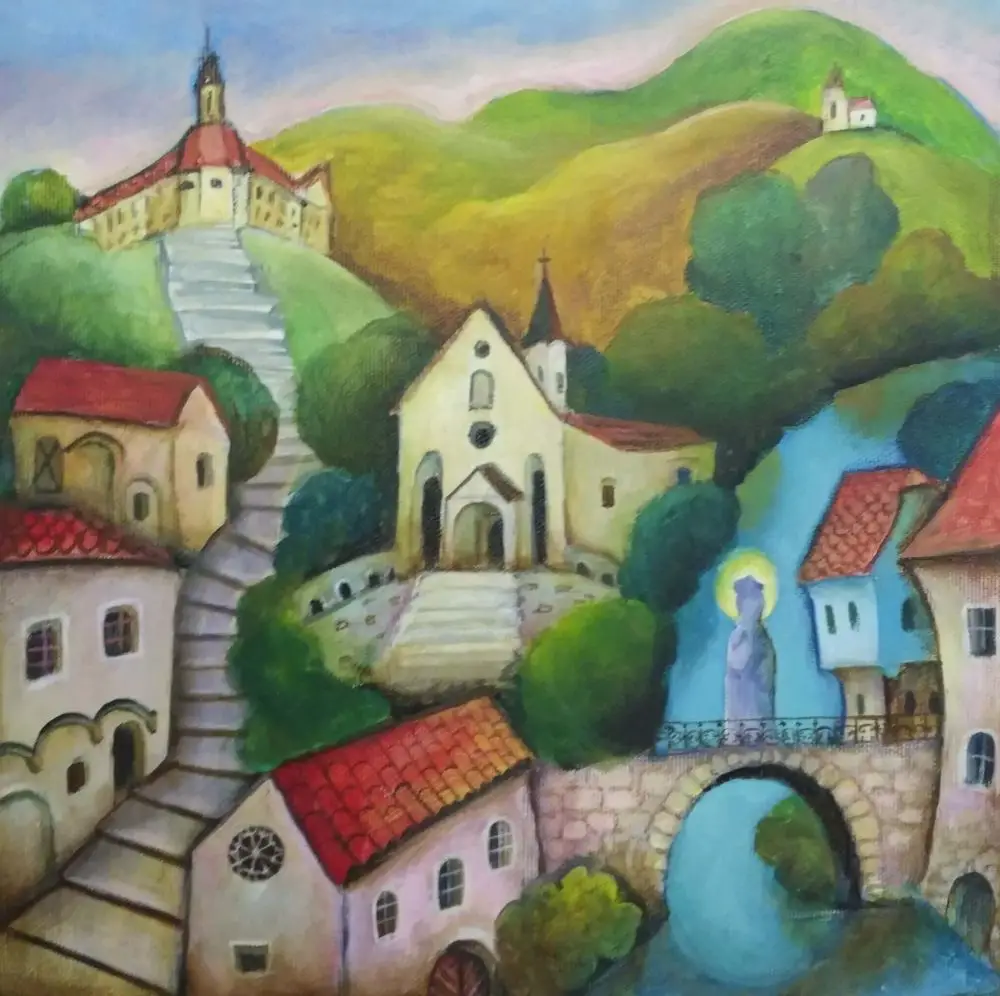
How did you make the move to art here?
In Slovenia I’m wasn’t looking for an office job, because of the language, so art became my priority. Living in Europe helped me travel more, exhibit and sell my art. In 2016 I won the grand prix in the biggest European festival of naïve art, held in Poland. Last year I published my first children’s book Repa velikanka (The Giant Turnip). Perhaps it’s little easier here than trying get lucky with a New York publisher
Unfortunately it’s hard to sell anything in Slovenia, especially art, unless it’s very cheap. But still I’m very thankful to be able to paint. I always tell my students in the adult classes I teach that when you create you never feel lonely or old, you will not be afraid to be left without job, or to retire. It’s like you’re hiding away in a magical world full of new adventures. Yes of course sometimes you struggle, sometimes your idea reveals itself through an image easily. You never know. My only complaint is that I don’t have enough hours in a day to find some extra time to paint among my routine of being housewife with two kids.
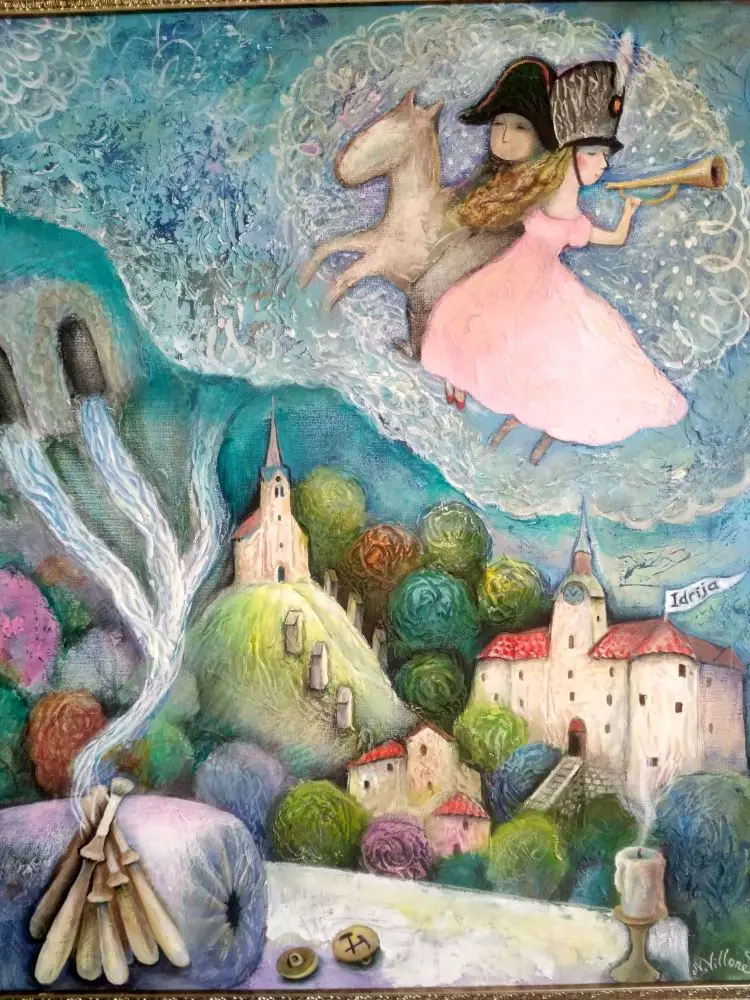
Tell us something about the art tours you run.
As I said earlier, my husband works in tourism, organising food tours of Slovenia, so we started running art tours together. It works perfect between us. He’s the organiser and driver, and then while I’m doing the workshops he’s taking a nap.
We do a seven-day art tour that’s suitable for everybody: from beginners to experienced painters. On the tour you learn a few painting techniques and some tricks from me, so you can create art which looks look deep, textural, and a little vintage.
We choose the most picturesque places to do workshops in the open air. So Lake Bled, the vineyards of Brda, and in Piran, on the Adriatic coast. On a tour we paint, hike, eat homemade food from the local farms, and learn the recipes in a cooking class. There’s also wine-tasting in vineyards, and trips to an olive garden and other farms. You can find out more at my website.
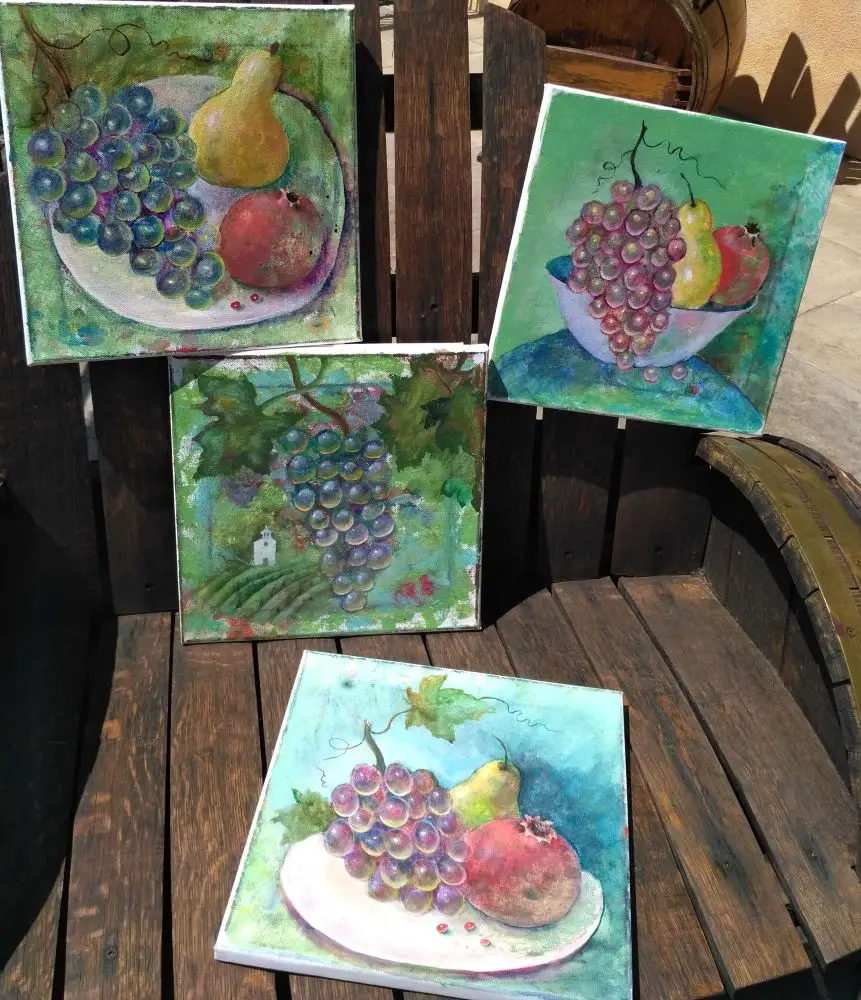
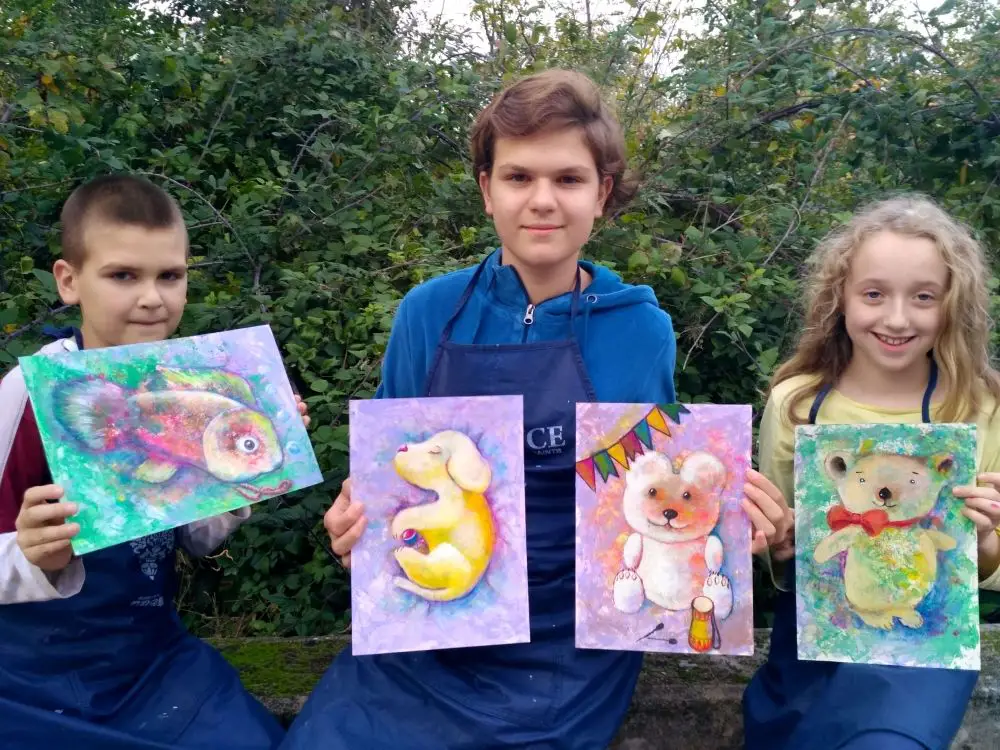
What are your plans for the future?
Nowadays we live in Koper. Watching the sea, boats and cruise ships cheers me up and gives me new ideas for paintings. My hope is to find place and start exhibiting my art in Slovenia this year, so I can invite your readers to a show. Now I’ve been here a few years I’ve painted lots of Slovenian places, like Bled, Ljubljana, Škofja Loka, Idrija and others. My style is what they call naïve. I see things figuratively, symbolically – combining reality with imagination.
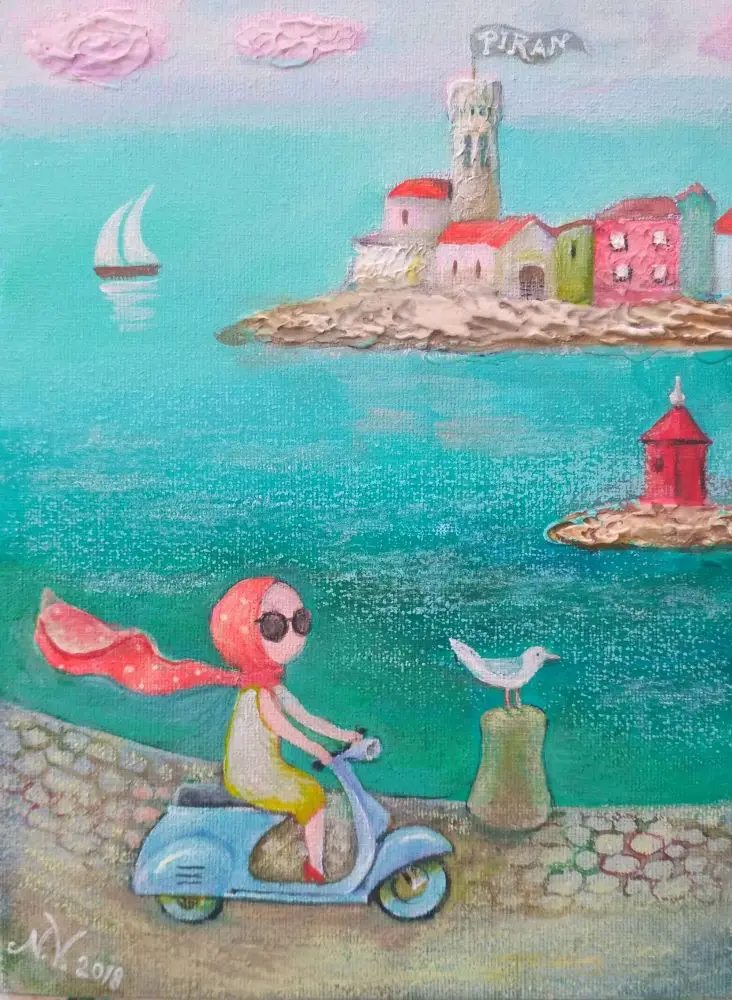
If you’d like to see more of Natasha Villone’s work or learn more about her tours then you can do so on her website, Facebook, or Etsy page, and if you’re in Koper you can sign up for one of her weekly workshops, which happen every Thursday, by sending an email to This email address is being protected from spambots. You need JavaScript enabled to view it.
And if you'd like to share your story with our readers, then please get in touch at This email address is being protected from spambots. You need JavaScript enabled to view it.
STA, 10 December 2018 - Foreign Minister Miro Cerar, speaking after an EU ministerial in Brussels on Monday, said the EU should respond to positive change in the Western Balkans with very concrete acts or else it risked losing the region geo-strategically.
Cerar said positive shifts could be noticed in the Western Balkans at the end of 2018, inspiring hope the region's integration into the EU could continue successfully if countries meet all the criteria.
He believes it is vital for the EU to intensively continue to integrate the region, since countries such as Russia, Turkey and China are interested in it.
"The EU is the best guarantee of Europe's stability. Countries from the region should be integrated as soon as possible, as soon as they have implemented the reforms, or else this part of Europe will be lost to us geo-strategically, which would be a major loss for our European family."
He also pointed to Slovenia's two positive initiatives for the region: an integrated border control management system, which has facilitated a shift towards better coordination in fighting crime, and an agenda for the youth.
Cerar also said the EU should do all in its power so that Serbia and Kosovo reach a comprehensive agreement solving all open issues and having no negative consequences for the broader region.
He expects the EU to decide to launch accession negotiations for Macedonia and Albania in June 2019. He believes this must be done especially if the Macedonia name agreement is implemented.
Tension with Russia in the region
Ukraine, or the escalation of tensions with Russia, was also on the EU foreign ministers' agenda, but despite calls by visiting Ukrainian Foreign Minister Pavlo Klimkin to impose new sanctions on Russia and provide more financial aid to Ukraine, no such decision was taken.
"We did not explicitly discuss introducing new sanctions," said Cerar.
"It's now important to exert constant, decisive and unified pressure on Russia to release the arrested members of the crew and return the ship to Ukraine, and allow the freedom of navigation," he said in reference to the latest escalation of tensions in the Azov Sea.
Cerar believes there should be no need to make the sanctions more severe if Russia acted quickly to eliminate the latest violations of international law. In the opposite case, potential new or additional sanctions would probably be discussed sooner or later.
At the moment the EU hopes for some progress to be made at Tuesday's Berlin meeting of the Normandy contact group, which brings together Russia, Ukraine, Germany and France.
The EU is meanwhile expected to decide at a summit this week whether to extend the sanctions against Russia which expire on 31 January. Cerar believes they will be extended.
STA, 26 October 2018 - After an absence of 15 years, Russian flag carrier Aeroflot will return to Ljubljana airport as it launches daily scheduled flights from Moscow on Sunday.


